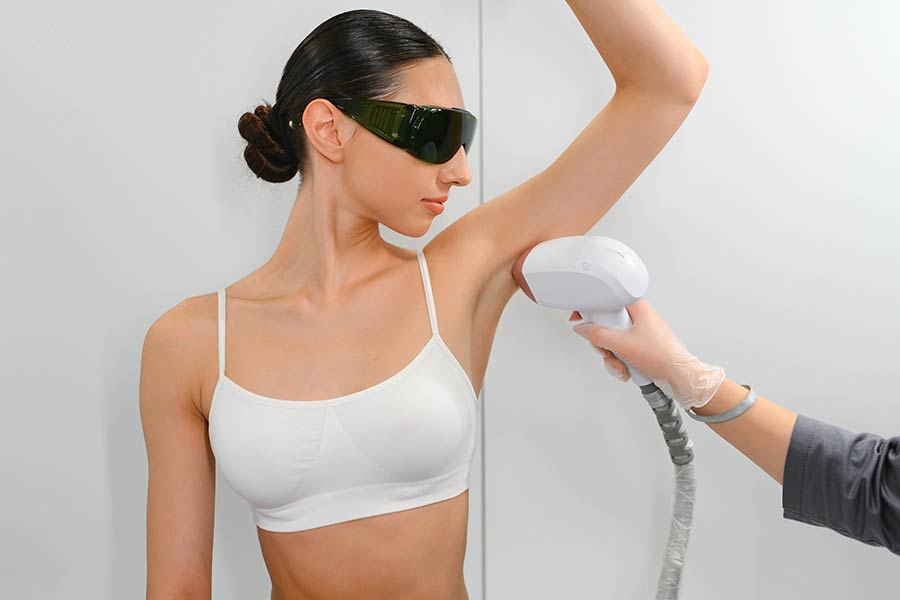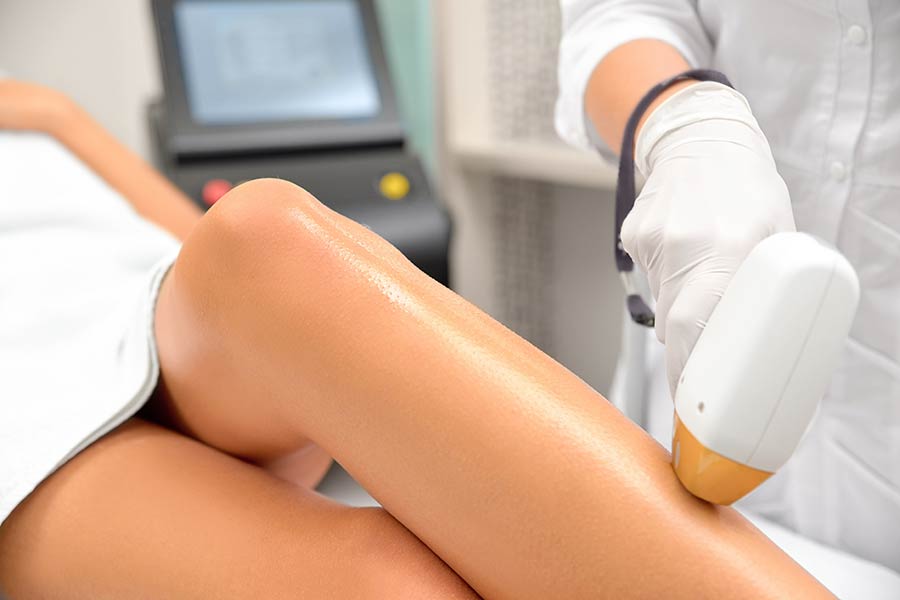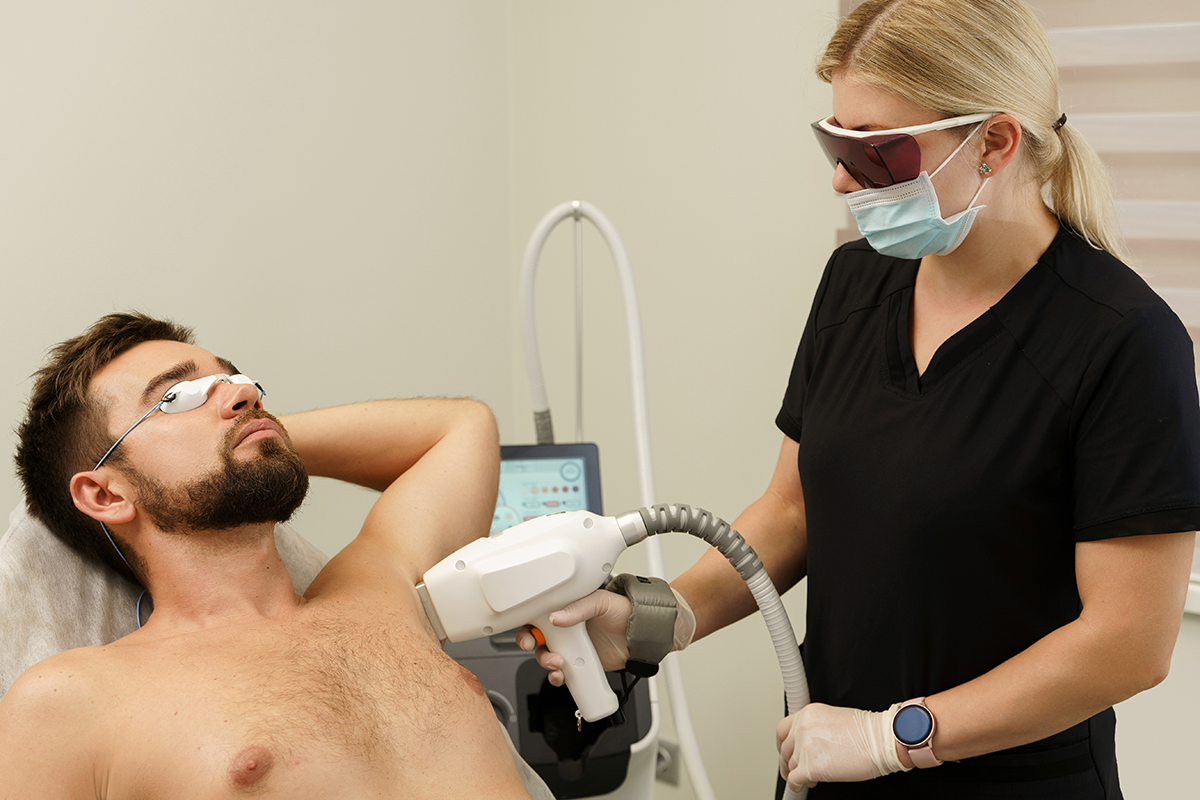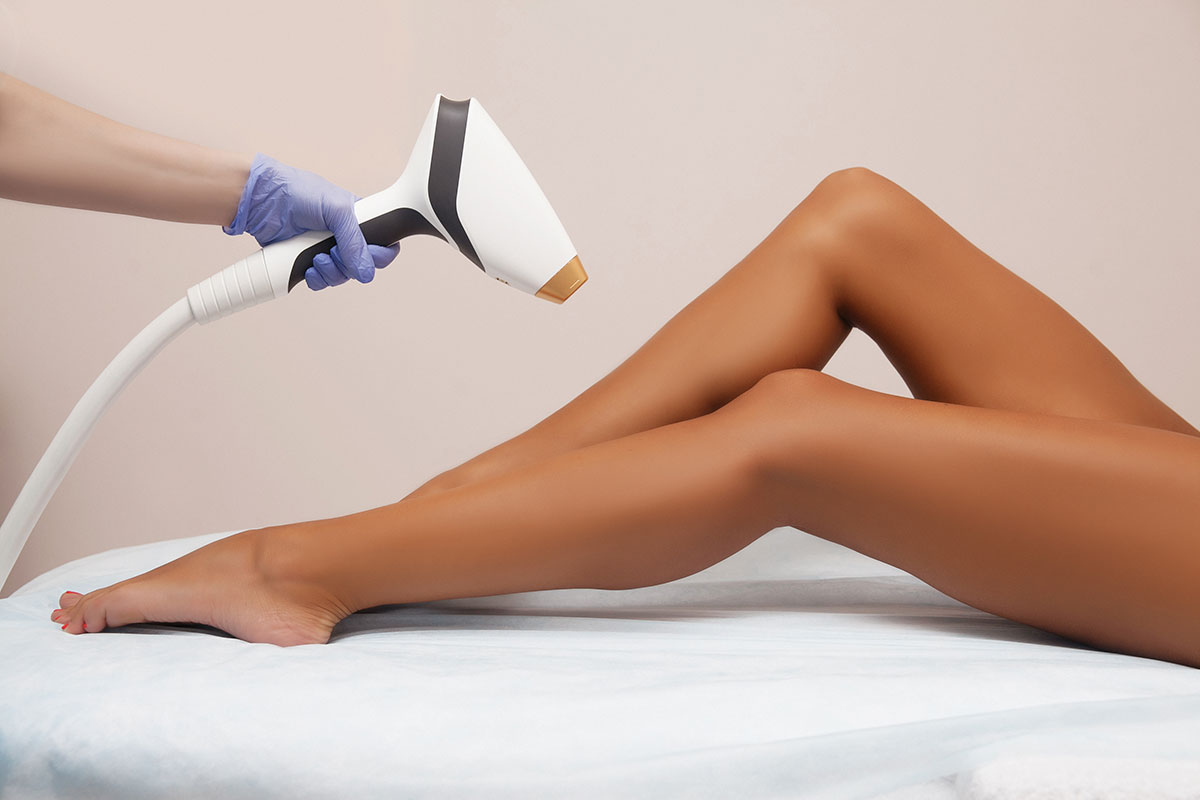Did you know that the average person spends nearly two months of their life removing unwanted hair? That's a lot of time that could be better spent! Enter the game-changer: permanent hair removal. It's not just a fleeting trend; it’s a revolution in how we approach personal grooming. Imagine saying goodbye to razors, wax strips, and those pesky tweezers for good. This method isn't just about saving time; it's about boosting confidence and embracing a smoother, carefree lifestyle. With various techniques on the rise, finding the right one for your skin type and hair color has never been easier. Let’s dive into why ditching temporary solutions for permanent hair removal could be your best decision yet.
Key Takeaways
- Permanent hair removal is achievable with methods like laser hair removal and electrolysis, which target hair growth at its source.
- Choosing the right method depends on individual factors such as skin type, hair color, and personal preferences; consulting with a professional can help make this decision easier.
- Preparation before undergoing hair removal treatments, like avoiding sun exposure and not waxing, is crucial for the effectiveness and safety of the procedure.
- Post-treatment care, including avoiding sun exposure and using recommended skincare products, is essential for healing and achieving the best results.
- Maintaining the results of permanent hair removal requires follow-up sessions as advised by your treatment provider and adhering to care instructions.
- It's important to debunk myths and misconceptions about permanent hair removal by seeking information from credible sources and professionals in the field.
Understanding Hair Removal
Permanent vs Temporary
Permanent and temporary hair removal methods differ mainly in how long they keep hair away. Temporary methods, like shaving or waxing, remove hair for days to weeks. Permanent solutions can reduce hair growth for months or even years.
Permanent hair removal requires more commitment and maintenance initially. Yet, it offers longer-lasting results. Temporary methods are easier but need regular repetition.
Popular Methods
Laser
Laser hair removal uses light energy to target and damage hair follicles. This method works best on people with dark hair and light skin. However, advancements have made it safer for darker skin tones too.
You'll likely need multiple sessions for the best outcome. The number varies but often ranges from three to seven.
Electrolysis
Electrolysis destroys hair growth with electrical energy. It's effective on all types of hair and skin colors. This method also requires several sessions to achieve complete hair removal.
It's known for its versatility and effectiveness across diverse cases.
Suitability Factors
Skin Type
Choosing the right hair removal method starts with knowing your skin type. Laser settings can be adjusted to match different skins, ensuring both safety and efficiency.
Darker skin tones face a higher risk of side effects with some technologies. It's crucial to consult professionals before deciding.
Hair Type
Hair color and thickness influence which hair removal method will work best. Lighter hairs might not respond well to laser treatment due to the lack of pigment.
Electrolysis is recommended for any hair type, offering a more universal solution.
Laser Hair Removal
How It Works
Laser hair removal uses light energy to target and destroy hair follicles. The laser emits a light absorbed by the melanin in the hair. This process heats the hair follicle, preventing future hair growth without harming surrounding skin. It's a delicate balance of targeting just the right components to ensure safety and effectiveness. Melanin's role is crucial as it absorbs the laser energy, making the treatment more effective for darker hairs.
Effectiveness
Studies show that after a full course of treatments, patients can expect an average hair reduction of 50-95%. The effectiveness depends on several factors, including the hair's growth cycle. Since not all hairs are in the same phase at the same time, multiple sessions are necessary to catch each one in its growth phase. Sometimes, touch-up sessions may be needed to maintain these results over a long period.
Risks and Side Effects
While laser hair removal is safe for most people, some might experience side effects like redness, swelling, and temporary changes in skin pigment. These are usually mild and go away on their own. However, there are rare but serious risks such as burns or scarring if the procedure isn't performed correctly. Following pre- and post-treatment care instructions carefully can help minimize these risks.
Cost Considerations
The cost of laser hair removal varies widely, with an average range between $200 to $900 per session depending on the treated area's size, hair density, and number of sessions required. While it might seem expensive upfront compared to temporary methods like shaving or waxing, it offers significant long-term savings by reducing or eliminating the need for those repeated costs.
Electrolysis Explained
Process Overview
Electrolysis is a step-by-step process. It starts with a consultation. Here, the practitioner discusses your goals and examines the treatment area. They also explain how electrolysis works.
Next comes the patch test. This is crucial for seeing how your skin reacts. It helps avoid unwanted reactions during full sessions.
A single session can last from 15 minutes to an hour. The time between sessions varies, but it's usually a week or more. Aftercare advice follows each session to ensure proper healing.
Suitability and Effectiveness
Not everyone is a good candidate for electrolysis. The best candidates have realistic expectations and hair types that respond well to the treatment.
Effectiveness depends on several factors:
- Hair type
- Skin type
- Body area
- Hair growth cycle
A professional assessment is vital. It ensures you choose the most suitable method for permanent hair removal. Remember, what works for one person might not work for another.
Potential Risks
With any procedure, risks are involved. Common risks include redness and slight swelling. Rare ones might involve scarring or changes in skin pigment.
Choosing a qualified practitioner reduces these risks significantly. Also, advancements in technology have made electrolysis safer than ever before.
Pricing Insights
Pricing varies widely in the world of hair removal. Electrolysis often involves per-session charges or package deals.
Over time, investing in permanent methods like electrolysis saves money compared to temporary solutions like shaving or waxing.
Several factors influence pricing:
- Where you live
- The clinic's reputation
Other Permanent Methods
IPL Technology
Intense Pulsed Light (IPL) technology uses broad-spectrum light to target hair follicles. This method differs from laser hair removal because it emits multiple wavelengths of light. Lasers use just one. Because of this, IPL can cover larger areas of skin in a shorter time.
IPL works best for people with dark hair and light skin. It's less effective for lighter hair or darker skin tones. This is due to the contrast needed between skin and hair color for the light to target the hair effectively.
Pros of IPL include its speed and suitability for large body areas. Cons involve its lesser effectiveness on certain hair and skin types compared to laser treatments. Some find it less precise than lasers.
Home Kits
Nowadays, you can find many at-home laser and IPL devices. These kits promise permanent hair removal from the comfort of your home. They are generally more affordable than professional treatments.
However, these devices have their limitations. They are less powerful than professional equipment. This means results might take longer to achieve and may not be as lasting. There's also a higher risk of misuse, leading to skin damage if not used correctly.
Despite these risks, many users find home kits cost-effective and convenient. They allow for treatment on one's own schedule without trips to a clinic.
Making the Right Choice
Comparing Methods
Laser, electrolysis, and IPL stand as the top contenders in permanent hair removal. Each has its own set of benefits and drawbacks. Laser hair removal offers quick sessions with high effectiveness but comes at a higher cost. It suits people with dark hair and lighter skin best.
Electrolysis, on the other hand, works for all skin and hair types. It's more time-consuming but guarantees permanent results. IPL is less effective on darker skin tones and requires more sessions. However, it's generally more affordable.
Choosing the right method depends on various factors. These include your skin and hair type, the area you want to treat, and how much discomfort you can handle. Your personal preferences play a big role too. Some might prioritize minimal pain over cost, while others might look for the quickest solution.
Personal Factors
Pain Tolerance
Pain levels vary across laser, electrolysis, and IPL treatments. Generally, laser and IPL involve less pain than electrolysis but can still cause discomfort. Using numbing creams or taking proper care of your skin before treatments can help reduce pain.
Your willingness to endure discomfort for the sake of results is crucial here. If you have a low pain tolerance, you might prefer IPL over electrolysis despite its longer treatment course.
Time Commitment
Permanent hair removal demands patience. Laser treatments might need 6-8 sessions spread over several months. Electrolysis requires more frequent visits but promises lasting results after completion.
Following recommended schedules is key to success. Skipping sessions can prolong the process unnecessarily. Despite this upfront time investment, think about the hours you'll save by not shaving or waxing regularly in the future.
Professional Consultation
It's essential to talk to a specialist before deciding on a hair removal method. They can offer advice tailored to your specific needs based on an assessment of your skin and hair type.
A professional consultation helps set realistic expectations and understand any potential risks involved with each method. This step ensures that you choose a safe and effective solution for your permanent hair removal journey.
Preparing for Treatment
Initial Consultation
Your journey to permanent hair removal begins with an initial consultation. Here, the practitioner will assess your skin type. This step is vital for tailoring the right treatment plan. They'll examine the areas you wish to treat and discuss the best approach.
It's crucial to be open about your medical history and any medications you're taking. Some conditions or medicines can affect how your skin reacts to treatment. This honesty ensures your safety and optimizes results.
This meeting is also your chance to ask questions. You might wonder about the number of sessions needed or how to care for your skin afterward. Feel free to voice any concerns. Understanding the process eases worries and sets clear expectations.
Pre-Treatment Care
Following pre-treatment instructions is key for a successful outcome. Avoid sun exposure before your appointment. Sunburned or tanned skin can complicate the procedure and increase discomfort.
Do not wax or pluck hairs in the area to be treated. These methods remove hair from the root, which is necessary for certain permanent removal techniques to work effectively.
Each hair removal method has its own set of preparations:
- For laser treatments, you might need to shave the area a day before.
- Electrolysis may require you to grow out the hairs slightly.
Adhering to these guidelines enhances treatment efficacy and reduces risk of side effects.
Post-Treatment Care
Immediate Aftercare
After your permanent hair removal session, immediate aftercare is crucial. You should apply ice packs to the treated area. This reduces swelling and soothes any discomfort. Avoid hot showers, saunas, and steam rooms for at least 48 hours. These can irritate your skin further.
Protecting the treated area from sun exposure is vital. It prevents pigment changes in your skin. Use a broad-spectrum sunscreen every day, even when it's cloudy. Temporary side effects like redness or slight swelling are normal. They usually go away on their own. If they don't, contact your healthcare provider for advice.
Long-Term Skin Health
For long-term care, keeping your skin healthy is key. Moisturize daily with a gentle lotion to keep the skin soft and hydrated. Always protect your skin from the sun with a high SPF sunscreen. This not only maintains your treatment results but also prevents premature aging.
Many find that their skin texture improves after permanent hair removal. It becomes smoother and less prone to irritation compared to shaving or waxing. For lasting results, regular follow-up sessions are important. They catch any new hair growth early on.
Maintaining Results
Follow-Up Sessions
After your initial treatment, follow-up sessions are crucial. They usually happen every 4 to 6 weeks. This schedule aligns with the hair growth cycle. It ensures each hair follicle gets treated at its most vulnerable stage.
The number of these sessions depends on several factors. They include the method of hair removal, the area's size, and your hair's growth cycle. For example, removing facial hair might require more visits than leg hair due to the different growth rates.
Completing all recommended sessions is important. It guarantees lasting results. Skipping sessions could mean some hairs are missed, leading to partial regrowth.
Lifestyle Adjustments
Before and after your treatments, making some lifestyle changes is beneficial. One key adjustment is avoiding sun exposure. This helps prevent skin irritation and enhances the effectiveness of the treatment.
These adjustments can also reduce side effects and improve outcomes. Most people find these changes have minimal impact on their daily lives. Simple actions like applying sunscreen or wearing protective clothing can make a big difference.
Myths and Misconceptions
Debunking Common Myths
Many people hesitate to try permanent hair removal because they believe it's unsafe or that their hair will grow back thicker. These are myths. In reality, methods like laser hair removal are FDA approved and backed by science. They target the hair follicles without harming the surrounding skin.
It's crucial to understand the difference between permanent reduction and absolute removal. While some treatments significantly reduce hair growth, they may not eliminate every single follicle. This distinction is important for setting accurate expectations.
Setting Realistic Expectations
Having realistic expectations is key when considering permanent hair removal. It's not a one-size-fits-all solution. The results can vary greatly due to individual factors such as hair color and skin type. For instance, darker hair absorbs laser light more effectively than lighter colors, influencing the treatment's success.
Remember, maintenance sessions might be necessary to keep the area smooth over time. This ties back to what was discussed about maintaining results in the previous section. Permanent hair removal can drastically reduce hair growth, but achieving 100% elimination is rare.
Summary
Diving into the world of permanent hair removal, you've journeyed through the ins and outs—from laser zapping to electrolysis magic, debunking myths, and gearing up for what lies after. It's clear, choosing the right method hinges on your unique skin story and hair-raising tales. But hey, don't let the options tangle you up. Whether it's beams of light or tiny electric whispers, the path to silky-smooth skin is in your hands. Remember, the prep and aftercare are just as crucial as the main event. Keep those areas pampered and follow through with the plan to maintain those bare results.
Now, don't just stand there at the crossroads of hairy decisions. Take that step towards a fuzz-free future. Do your homework, consult the pros, and when you're ready, dive in. Your smooth-skin saga awaits. Let's get zapping—or zipping—whichever road you choose, make it yours.
Frequently Asked Questions
Is laser hair removal really permanent?
Yes, laser hair removal can lead to permanent reduction of hair growth. Think of it as hitting the pause button on your hair's life cycle for a very, very long time.
How does electrolysis compare to laser hair removal?
Electrolysis zaps hairs one by one, making it a marathon for those seeking smoothness. Laser treatment, on the other hand, is like a sprint, covering larger areas faster but might not work for every skin and hair combo.
Can I remove any hair permanently at home?
While there are home devices for laser and IPL (intense pulsed light), they're more like a gentle nudge compared to the professional shove. For truly lasting results, seeing a pro is your best bet.
What should I do before undergoing permanent hair removal?
Think of your skin as a canvas. Keep it clean, un-tanned, and free from lotions or makeup. This prep step ensures the treatment gets right to the root of the problem without obstacles.
How long does it take to see results from permanent hair removal treatments?
Patience is key. You might start noticing less hair after 2-3 sessions, but reaching your smooth-skin goals typically takes anywhere from 6 to 8 sessions. It's a journey worth taking!
What are some common myths about permanent hair removal?
One tall tale is that it's insanely painful—modern treatments are more like a rubber band snap than a horror movie scene. Another myth? That it doesn't work on certain hair colors. While challenges exist, technology advancements have made it possible for more people than ever to benefit.
How do I maintain my results after getting permanent hair removal?
Imagine your treated areas as prized gardens; minimal maintenance can keep weeds (or hairs) at bay. Occasional touch-up sessions paired with gentle skincare will keep your skin looking its best indefinitely.












